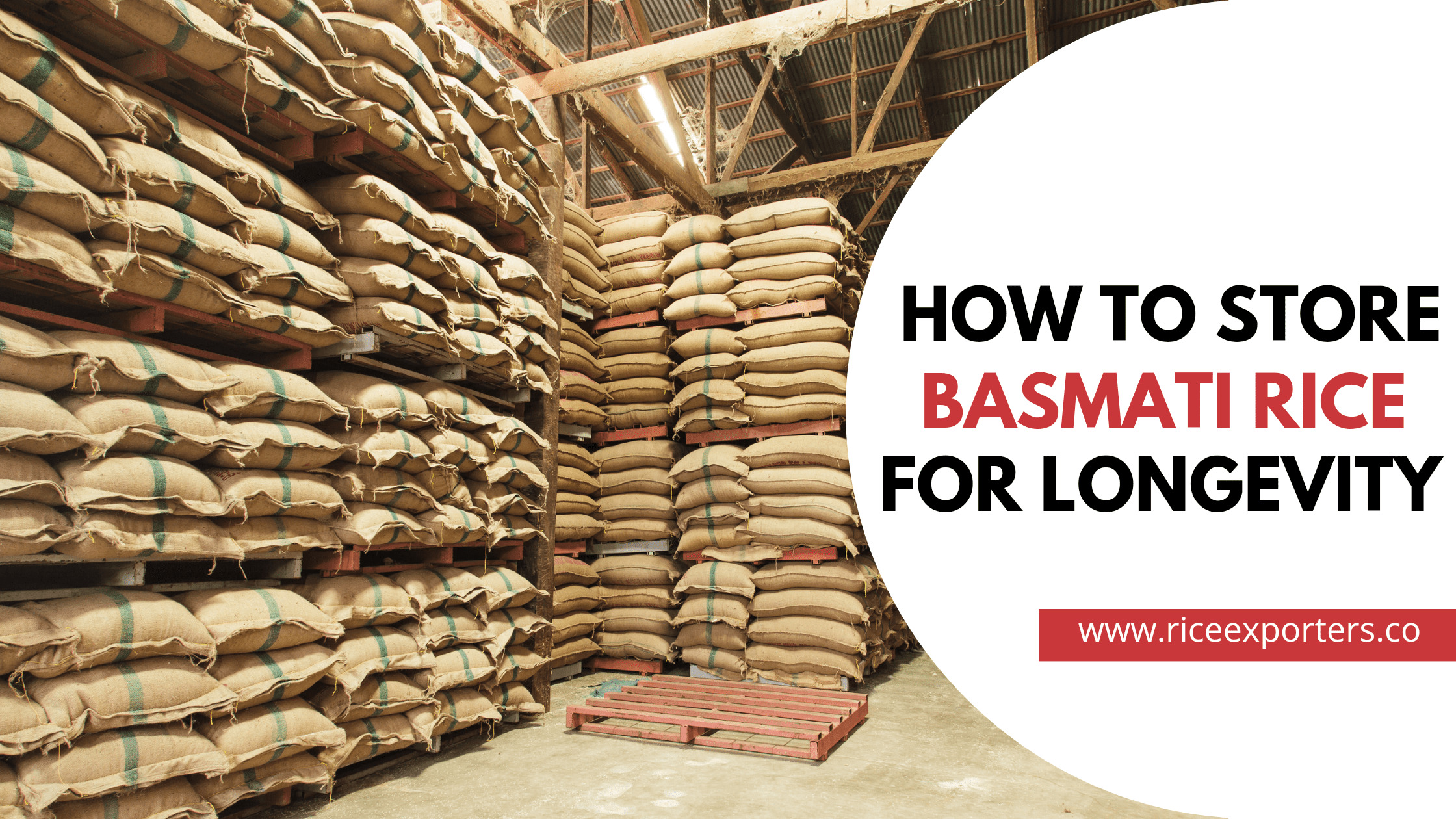Basmati rice, celebrated for its exquisite aroma and delicate long grains, is a culinary treasure cherished around the world. Its unique flavor and versatility make it a staple in countless dishes, from biryanis to pilafs. To fully appreciate the magic of Basmati rice in your cooking, it’s crucial to ensure its longevity and preserve its freshness. In this comprehensive guide, we’ll explore the art of storing Basmati rice to maintain its flavor, fragrance, and quality over time.
Understanding the Basics of Basmati Rice Storage
Before we dive into the specifics of proper Basmati rice storage, let’s start with some fundamental principles:
1.Keep It Cool and Dry
Basmati rice is highly susceptible to moisture, which can cause it to become clumpy and lose its distinct aroma and flavor. Therefore, it’s essential to store it in a cool, dry place away from direct sunlight and heat sources.
2. Protect It from Air and Light
Exposure to air and light can lead to the oxidation of rice oils, resulting in rancidity and off-flavors. Always use airtight containers to store Basmati rice, and keep it away from strong light sources.
3.Prevent Pest Infestations
Pests such as weevils can infiltrate rice if not stored properly. To avoid this, consider using pest-proof containers or incorporating natural pest deterrents like bay leaves or neem leaves into your storage setup.
4.Prioritize Cleanliness
Ensure that both the storage containers and the area where you keep your Basmati rice are clean and free of debris. This helps prevent contamination and keeps the rice fresh.
Choosing the Right Container
Selecting an appropriate container is crucial when it comes to storing Basmati rice for longevity. Here are some container options to consider:
1.Airtight Containers
Airtight containers, such as glass jars or plastic containers with secure seals, are ideal for preserving the freshness of Basmati rice. They keep out moisture, air, and pests, ensuring that the rice remains in perfect condition.
2.Vacuum-Sealed Bags
Vacuum-sealed bags are designed to remove excess air from the packaging, effectively extending the shelf life of Basmati rice. If you choose this option, ensure the bags are properly sealed after each use.
3.Food-Grade Buckets
Food-grade plastic buckets with airtight lids are suitable for storing larger quantities of Basmati rice. Just make sure they are clean and completely dry before use.
4.Mylar Bags with Oxygen Absorbers
Mylar bags, when paired with oxygen absorbers, create an oxygen-free environment that prevents spoilage and pest infestations. This method is particularly effective for long-term storage.
Steps to Properly Store Basmati Rice
Now that you have the right container, let’s go through the steps to store Basmati rice properly for longevity:
1. Check for Impurities
Before storing, inspect the Basmati rice for any impurities, such as stones or foreign particles. Remove any contaminants to ensure the purity of your rice.
2. Dry the Rice
If your rice isn’t already dry, spread it out on a clean, dry surface and let it air dry for a few hours. This step helps prevent moisture from being trapped during storage.
3. Choose the Right Location
Identify a cool, dry, and dark location for your rice storage. A pantry, cupboard, or a cool kitchen cabinet away from the stove and direct sunlight are suitable options.
4. Use Airtight Containers
Transfer the Basmati rice into a clean, airtight container. Ensure that the container’s seal is secure to prevent any air or moisture from getting in.
5. Label and Date
Label the container with the type of rice and the date it was stored. This practice helps you keep track of the rice’s freshness and rotation.
6. Store in a Controlled Environment
Maintain a consistent temperature and humidity level in your storage area. Fluctuations in temperature and humidity can lead to condensation, which is detrimental to stored rice.
7. Rotate Your Stock
To ensure that your Basmati rice remains fresh, use the “first in, first out” (FIFO) method. When you replenish your rice supply, place the new rice behind the older stock to ensure you’re always using the oldest rice first.
Tips for Prolonged Storage
If you plan to store Basmati rice for an extended period, here are some additional tips to consider:
1. Oxygen Absorbers
When using vacuum-sealed bags or Mylar bags, adding oxygen absorbers can significantly extend the shelf life of Basmati rice by removing residual oxygen that may be present.
